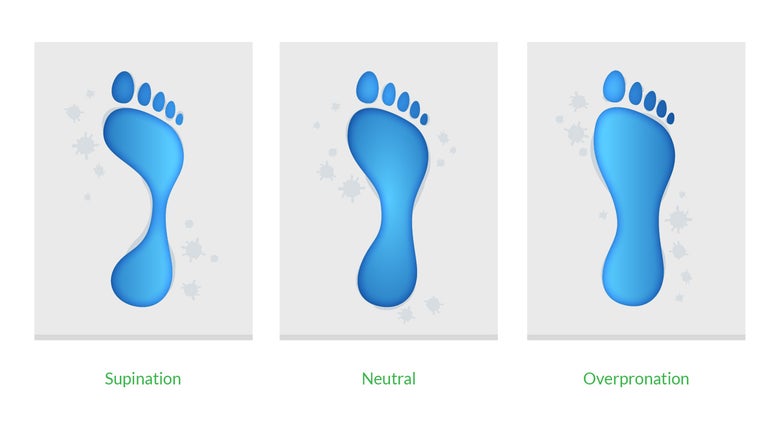Ever since I was young, I’ve noticed that my feet were wider than most. That and not being able to afford non-standard shoes were my self-diagnoses for having foot pains after running. Now that I’m not spending so much money because COVID-19 has me in the house 24/7, I decided to start looking at new running shoes. While cruising the internet for a new pair of running shoes, I stumbled across a term on Asics website that I didn’t recognize – pronation. According to Wiki, pronation is the natural movement of the foot that happens when your foot lands when walking or running (link). There are three movements of pronation: overpronation, neutral/natural pronation and underpronation (or supination).
What’s the Difference?
Neutral/Neutral pronation, in my definition, is regular foot motion when walking or running. The more scientific answer is that when the foot “rolls” inward about 15 percent when completing contact with the ground; and can support your body weight without any problem. People with overpronation strikes their heel on the ground during initial contact, rolls more than 15 percent, and mostly pushes off the ground using the big toe and the second toe. People with underpronation (like me) rolls less than 15 percent and pushes off the ground using the small toes (link). Of course, if you want to determine which type you are, it is recommended to consult an expert. However, if you’re like me, I’m cool with home tests. One of the more popular tests is the water test. During this test, you wet your feet, and then step on a surface to show your feet pattern. See this link for more info.
Below is an image from Running Warehouse of what’s called the Wet Test to determine your pronation:

If you need more visuals, I found these YouTube videos to be the most simple explanations of the subject: Overpronation, Underpronation and Normal/Neutral Pronation.
Why does this matter?
Now that you’ve been somewhat educated on pronation, you may be wondering why it matters. It matters because understanding your level of pronation can help you avoid injuries by purchasing the correct shoes! Coming back full circle from my into, realizing that my shoes have been the culprit of some of my injuries in the past has completely blown my mind. If it wasn’t for Asics’ pronation shoe filter feature, I may have never realized it even existed. I also have to admit, I am a brand loyalty consumer type. It has always been Adidas and Nike for life; anything outside of that was deemed “weak”. Also, I did purchase a pair of Asics GEL-Quantum 360 knit; so we will see how they work out. I’m excited!
Happy Running!
